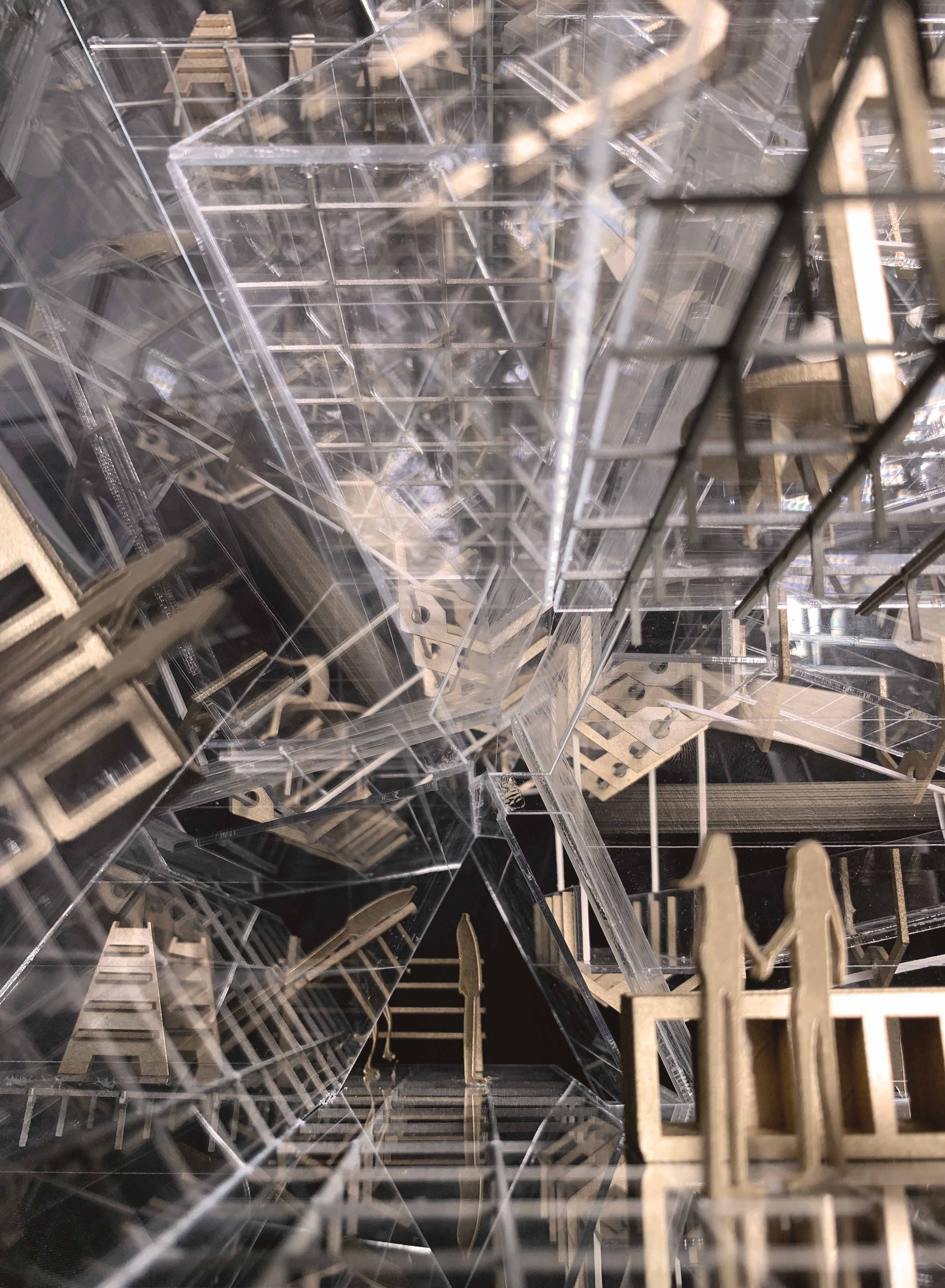
Vitrine Effects
This thesis seeks to reveal, curate and re-position the threshold between object on display and in function affected by various scale of vitrines. Vitrines historically exhibits strong prominence in the culture of display, object commodification and preservation. From small vitrines in museum to massive scale Buckminster Fuller’s proposed geodesic dome over midtown Manhattan, these transparent enclosures are tools for preservation, display and domestication, objectifying their subjects, occasionally divorcing them from their context of origin. More recently, proposals for refurbishment of Notre Dame has gathered ubiquitous use of glass roofs as restoration strategy (Walsh. 2019).
Vitrines perform multi-faceted roles. In museum, vitrine was an enabling device to construct diorama, a formal narrative tool in the form of miniature models. In the context of modern art, the use of vitrines has been explored as mediator to delineate, distort and reposition the meaning of objects contained within. For instance, terrifying objects like exposed human flesh could be mediated with layering effects of glass’s reflection and refraction in Paul Thek’s Untitled self-portrait (Neubauer, 2017, pg 149-152).
This thesis begs two questions, (one) How do we construe the meaning of space and objects included or excluded by vitrine? (two) What is our role as participants and observers in space mediated by multi-scalar vitrines?
-
Site: San Francisco, USA
Year: 2018-2019
Status: M.Arch Thesis Fall 2018 - Spring 2019, UC Berkeley
Program: Museum
Instructor: Andrew Atwood & Andrew Shanken



